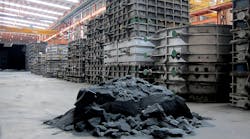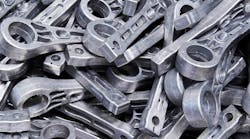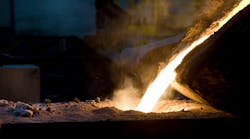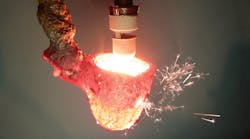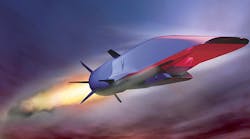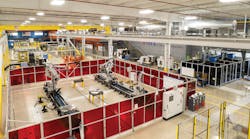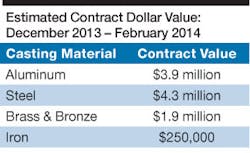Creating and implementing resources to link metalcasters to the U.S. Department of Defense’s part-acquisition needs has been a valuable byproduct of the Non-Ferrous Founders’ Society’s long standing relationship with the American Metalcasting Consortium (AMC). AMC partners with the Defense Logistics Agency (DLA) and the cast metals industry to provide resources that stimulate cost reductions, quality, and market share growth. NFFS’s role in the AMC program is to deliver value to DLA while developing tools and resources that promote business opportunities, efficiencies, and cost savings to the cast metals industry. What started simply as a database of tooling for defense applications has evolved into a sophisticated web portal that has the potential to reshape the process by which manufacturers support the defense market.
The Integrated Casting Order Network (ICON) web portal is derived from one of the most successful (and award winning) programs in recent years through the AMC, the Procurement Solutions Network for Castings. This web-based resource was created to simplify the procurement process for cast parts, leveraging the integration of a tooling database that cataloged the location of existing defense-related patterns; a casting supplier database of those foundries that manufacture parts for the defense industry, and a solicitation review process to quickly identify government procurements for cast components and direct them to capable metalcasting operations.
The initial process of monitoring these solicitations was conducted manually, using a confirmed casting part list, to determine if tooling exists and direct the solicitations to capable casting suppliers leveraging the defense tooling database and the casting supplier database. To date, the program has generated thousands of new business orders for the foundry industry and has documented millions of dollars in cost savings for the government.
Despite the successes, the concept lacked automation to maximize its potential. Certainly there were many government and commercial bid-matching sites, but leveraging these sites presented some challenges. The first challenge is the limitation of characteristics that a user had available to find opportunities. Common search parameters are based on finished parts rather than manufacturing characteristics, so it was nearly impossible for a foundry to find the solicitations that fit its production capabilities. A partial solution is to assist the foundry to develop a prospect list of known cast parts to receive solicitation notices on those items. However, new cast parts are identified all of the time which requires one to actively review and update their list.
The second challenge is that solicitation data can often be deficient or fragmented among different sources. A foundry looking to quote a new job is not only going to need the technical data to ensure that they have the capabilities to produce the part but they also need to review its economic impact, to determine if it is going to be profitable. Unfortunately the business and technical information are not all packaged together, so some legwork is needed to piece together a complete review process. Common issues like unavailable drawings or procurement history can result in another dead end.
Integrating Data for Casting Orders
The ICON web portal transcends traditional bid-matching services by providing a robust e-sourcing solution that filters, organizes, and delivers defense casting business opportunities to capable metalcasters by matching part requirements to the supplier’s manufacturing capabilities. The architecture of the database, the web interface, and back-end resources have been developed to focus on assisting companies with manufacturing capabilities to use those skills in the DoD marketplace, either as a prime or sub-contractor.
Foundries using ICON may expect better results than using other bid-matching and government procurement sites, because presently it is tailored for defense casting applications. In the initial filtering process, the portal organizes the solicitations by material and process so that it will automatically deliver only those solicitations that match a foundry user’s capability profile.
In addition, ICON verifies that technical data (drawings) is available for any solicitation prior to delivery; otherwise the solicitation is excluded from the results page. This saves the user time by eliminating the possibility of finding the right opportunity but not having the drawings available in order to quote.
Each time one or more solicitations has been matched to a company, the option has been created for the user to receive an e-mail that notifies them how many new solicitations have been matched to their profile and the total estimated value of the solicitations for that particular day. With the integration of the cast tooling database, the foundry also receives the number of those solicitations for which the foundry has tooling.
Logging into the site directs the user to the solicitation index page (see Figure 1) to review the opportunities that have been matched to their foundry. This index assembles all of the pertinent information on which to base a business decision, as to whether or not to pursue submitting a quote. For each solicitation, the index provides the quantity, estimated contract value, date of last buy, bid due date, material, process, solicitation status (updated daily), and even a two-year forecasted demand for a particular part. All of these packaged together allow the foundry to identify quickly which opportunities are available.
From the index page, a link for each listing will navigate to the solicitation detail page, which contains an item's complete procurement history, recent solicitations, technical description and notes, federal part data, and a direct interface to all of the drawings and standards associated with the item. This data is pulled from multiple government resources and assembled on one page in an easy format with each part code defined in a pop up when selected. While all of the data presented on the detail page is important, for the manufacturers the two critical elements are the drawing interface and procurement history.
Instead of logging in to an external website to download and retrieve drawings, often in multiple file formats, ICON has a built-in interface (see Figure 2) to the government's technical data repository, so that a user can select any or all of the technical documents (drawings, specifications, change notices) and download them to their computer for review. The portal connects with the government site, retrieves the specified documents, and automatically converts all of the documents selected into a single .pdf document. To expedite this process, particularly when reviewing multiple solicitations, the user may direct the system to retrieve and e-mail the documents when completed, rather than waiting for them to be displayed in the browser. Anyone who has experience with traditional methodologies for collecting drawings will appreciate the significant time savings of this feature.
The other critical element of the detail page is the procurement history (see Figure 3.) The system provides the full procurement history available for an item, which is useful to determining the purchasing frequency, quantity, and unit price. Included in the procurement history table is a vendor profile database so that a user may select the link next to any given supplier, and the system displays the company demographics, contact person, phone, and an e-mail address.
Most foundries do not bid directly to the government. For that reason, they typically depend on RFQs from their customers for their defense orders. Now with ICON, the foundry has much more flexibility in pursuing opportunities in the defense market. The system’s efficiency identifying and presenting defense casting orders virtually eliminates the excuse of not having sufficient time. Foundries that are not bidding directly now have sufficient data to pursue these bids, submitting a casting quote to one of the suppliers in an item’s procurement history or to one of their existing customers rather than waiting for the opportunity to come to them.
The portal is a dynamic prospect list of parts. The initial master database contains nearly 20,000 cast items and is updated routinely, meaning that a newly added item that is solicited will automatically be directed to those foundries in the system that have the ability to cast that component. And, as the population of identified parts increases so does the potential dollar value of these opportunities (see Figure 4.)
This resource was developed by NFFS as part of AMC’s Casting for Sustained Readiness (CSR) program. NFFS invites you to experience the business opportunities made available to you with ICON. The portal was introduced April 1, and will be available to any foundry or diecaster at no cost for a limited time only. You may register to access ICON online at portal.defensecastingresources.com
Ryan J. Moore, CAE, is the membership services manager for the Non-Ferrous Founders' Society. Contact him at Tel. 84-299-0550, or [email protected], to discuss the ICON program.

